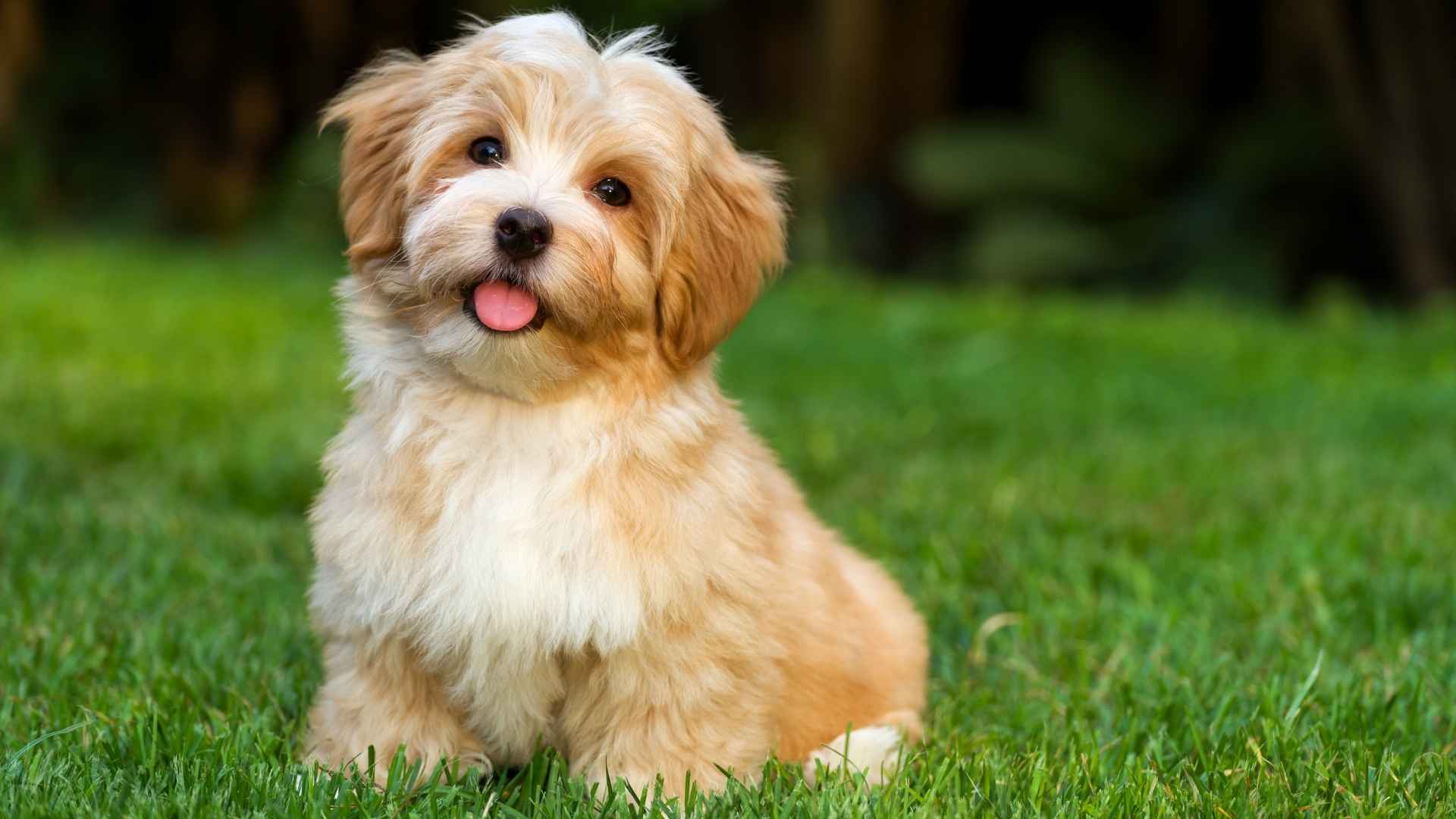What if choosing the right dog today could save you thousands in vet bills—and years of heartbreak? While no breed is immune to every illness, some are far less likely to develop serious genetic health issues.
The difference comes down to selective breeding, natural development, and overall resilience. Most people don’t think about long-term health when they fall in love with a puppy, but it’s often the deciding factor between a joyful journey and a painful one.
So, which breeds offer a better chance at a long, healthy life? Which ones have fewer inherited diseases written into their DNA? If you’re looking for a dog that gives you peace of mind along with companionship, you’re not alone.
This article explores dog breeds with minimal genetic health issues, focusing on those with strong, steady histories of good health and fewer surprises at the vet.
Dog Breeds With Minimal Genetic Health Issues
1. German Shorthaired Pointer
The German Shorthaired Pointer’s muscular, symmetrical body plays a big role in its overall health. Their short, water-resistant coat is low maintenance and reduces skin-related risks. With proper care, they often live between 12 to 14 years without many breed-specific complications.
Versatile and Physically Balanced
Originally developed for multiple hunting roles, this breed was selectively bred for function, not exaggerated features. That history helped them retain a solid skeletal structure and a balanced gait. These traits minimize stress on joints during activity, especially in open environments.
Mentally Sharp and Naturally Active
Their alert temperament and eagerness to engage make them a mentally stable breed. Boredom-related issues are rare when they’re mentally stimulated through scent-based play or regular exercise. This mental sharpness also contributes to their overall resilience and well-being.
Well-Known for an Unusual Trait
They are among the healthiest dog breeds that can point with their entire body — even with their tail — an instinct that’s both genetic and distinctive. This isn’t just behavior but a display of deep-rooted genetic consistency, preserved over generations.
2. Old English Sheepdog
Despite their sturdy, shaggy appearance, Old English Sheepdogs adapt surprisingly well to indoor life. They have a calm indoor demeanor and often prefer lounging near their family. When their daily walks are fulfilled, they’re content in smaller spaces, including apartments.
Energy With Manageable Bursts
They are known for short bursts of playful energy rather than constant activity. Regular walks, mentally engaging toys, and occasional open-space play balance their exercise needs. This combination prevents restlessness and supports a manageable routine for urban lifestyles.
Coat and Noise Management Indoors
Their double coat requires regular brushing, but it doesn’t shed excessively if maintained. They’re not frequent barkers, which is a helpful trait for apartment dwellers. With consistent grooming and early training, they’re low on disruption and high on companionship.
An Unexpected Icon in Pop Culture
Recognized for their bear-like gait and large presence, they were once featured in a famous paint commercial that made the breed iconic worldwide. Though large in size, they’re one of the healthiest long-coated breeds preferred by experienced pet parents in city settings.
3. Chinese Crested
The Chinese Crested is lightweight and small, usually under 13 pounds, making them easy to carry and manage in small living spaces. They’re known for being quiet dogs, rarely barking unnecessarily, which is ideal for close quarters. Their calm temperament suits buildings with shared walls.
Low Exercise and Space Needs
Unlike many high-energy breeds, their daily activity needs are modest — a short walk and indoor play usually suffice. Their slender build allows them to move around freely without needing much room. Apartment dwellers appreciate their adaptability to slower indoor routines.
Minimal Shedding and Grooming Needs
Hairless varieties need regular skincare, but there’s virtually no shedding to worry about — a big plus for confined spaces. The coated “Powderpuff” version has fine hair that doesn’t shed like other breeds. Both types are relatively odor-free and easy to maintain indoors.
An Unusual and Historic Trait
One of the only dog breeds that commonly appears hairless, the Chinese Crested carries a unique gene mutation shared with no more than a handful of other breeds. This gene has been naturally preserved over centuries, contributing to their minimal coat-related health problems.
4. Australian Cattle Dog
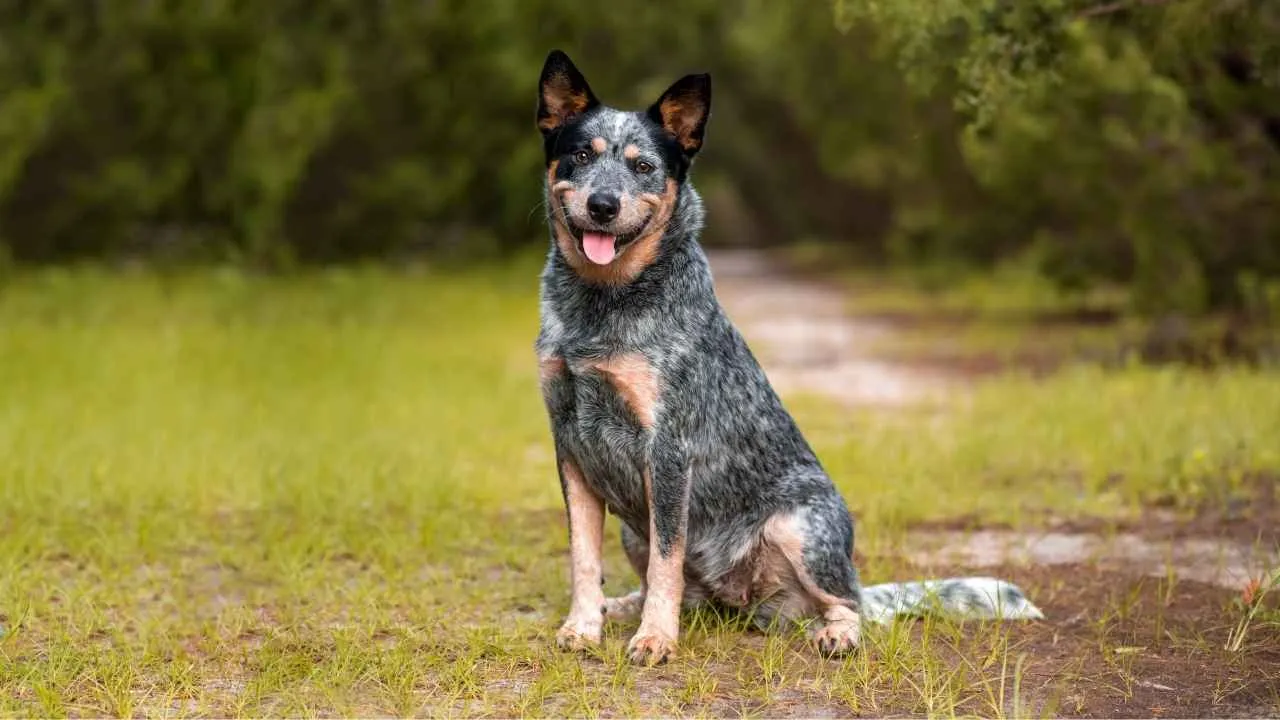
Despite being bred for rugged outdoor work, their medium-sized and muscular body adapts well to smaller living spaces. Their short, dense coat is easy to manage indoors and doesn’t shed excessively. With proper care, their average lifespan reaches 12 to 16 years.
Naturally Alert and Quiet
Australian Cattle Dogs are not known for unnecessary barking, which helps in shared apartment settings. They stay vigilant without being noisy, often watching their surroundings calmly. Their ability to relax between active sessions is key for indoor environments.
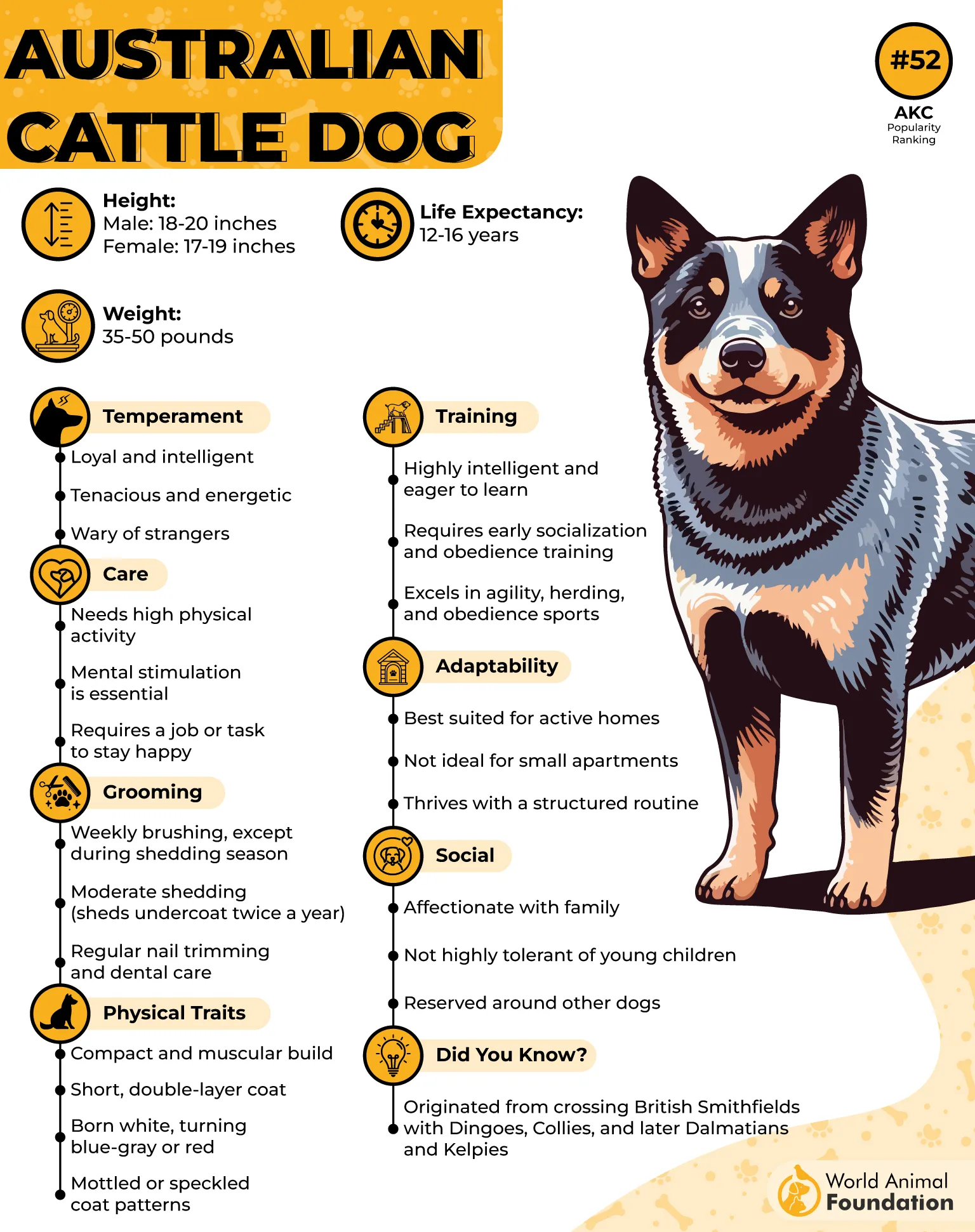
Clever Minds and High Trainability
They rank among the most intelligent breeds, picking up on commands and house rules quickly. Many pet owners value how routine-based they are, which allows smoother adaptation to apartment schedules. Puzzle feeders or obedience tasks help keep them mentally balanced.
Known for an Unbelievable Feat
One Australian Cattle Dog named Bluey holds the record for the oldest dog ever, living up to 29 years and 5 months, as highlighted by Petplan. This long life hints at strong genetics — a trait admired by anyone looking for a loyal canine companion or an athletic dog that’s also long-living.
5. Chihuahua
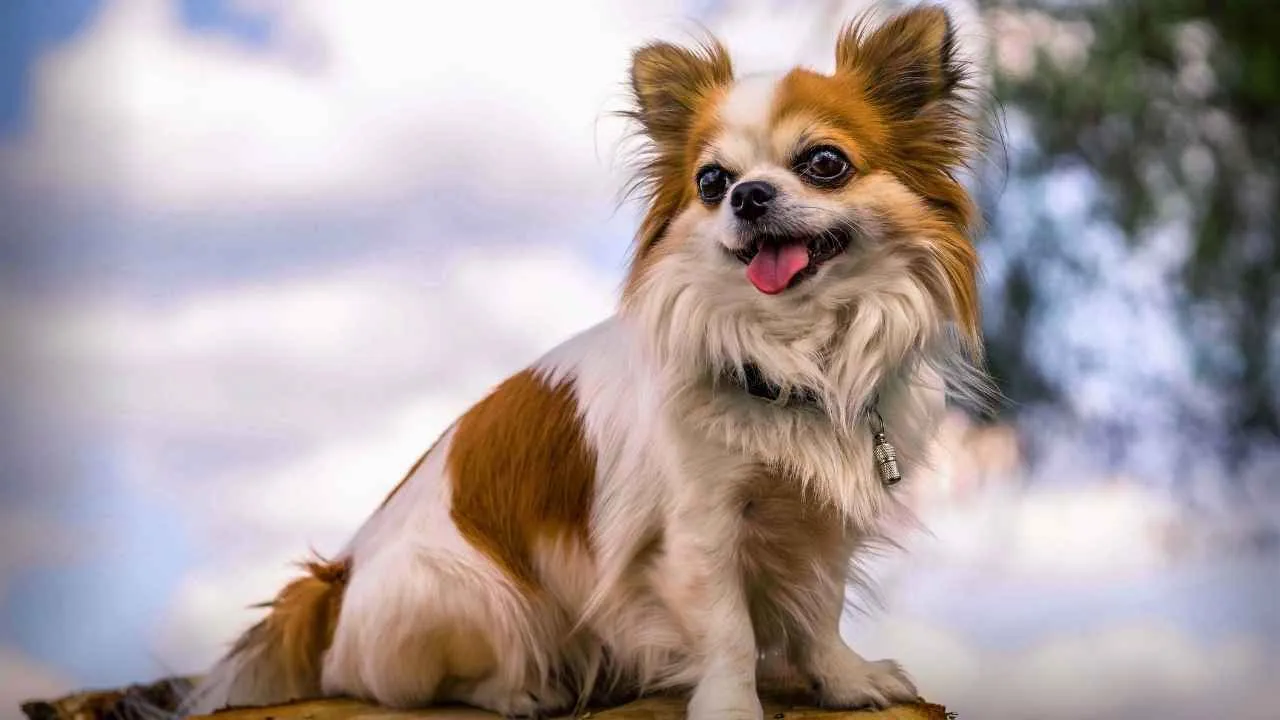
The Chihuahua’s tiny frame — usually under 6 pounds — makes it one of the most space-efficient companions. Their comfort in small areas and preference for cozy spots help them thrive in tight quarters. Even in multi-unit buildings, their quiet nature indoors is a real advantage.
Adaptable and Bond-Oriented Temperament
This breed forms strong attachments with its owners and stays close, which works well in apartment settings. While they can be wary of strangers, their loyalty and alertness provide a subtle sense of security. Some dogs tend to become overly protective, but training curbs this early.
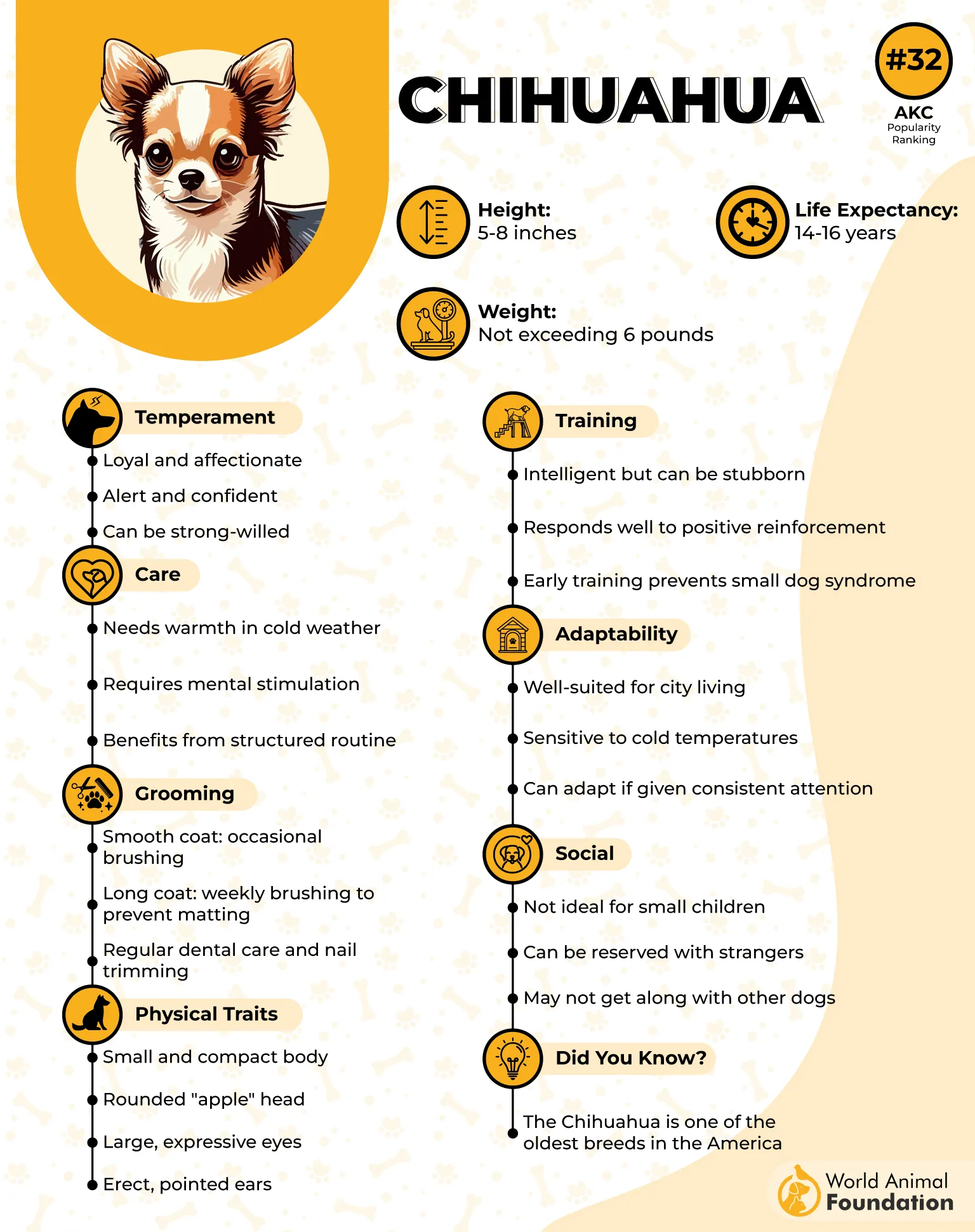
Low Exercise Demands Indoors
They don’t need a yard or long walks to stay happy — short indoor play or hallway strolls can keep them fit. Mental stimulation with toys or light interaction is usually enough. Many remain energetic well into older age, even when raised in a small house from a young age.
Breed Origins and Quirky Trivia
Originally bred as companion dogs in ancient Mexico, Chihuahuas are often considered sacred in Toltec and Aztec cultures. They’re also the only dog breed commonly born with a soft spot on their skull, called a “molera,” as highlighted by the Chihuahua Club of America.
6. Greyhound
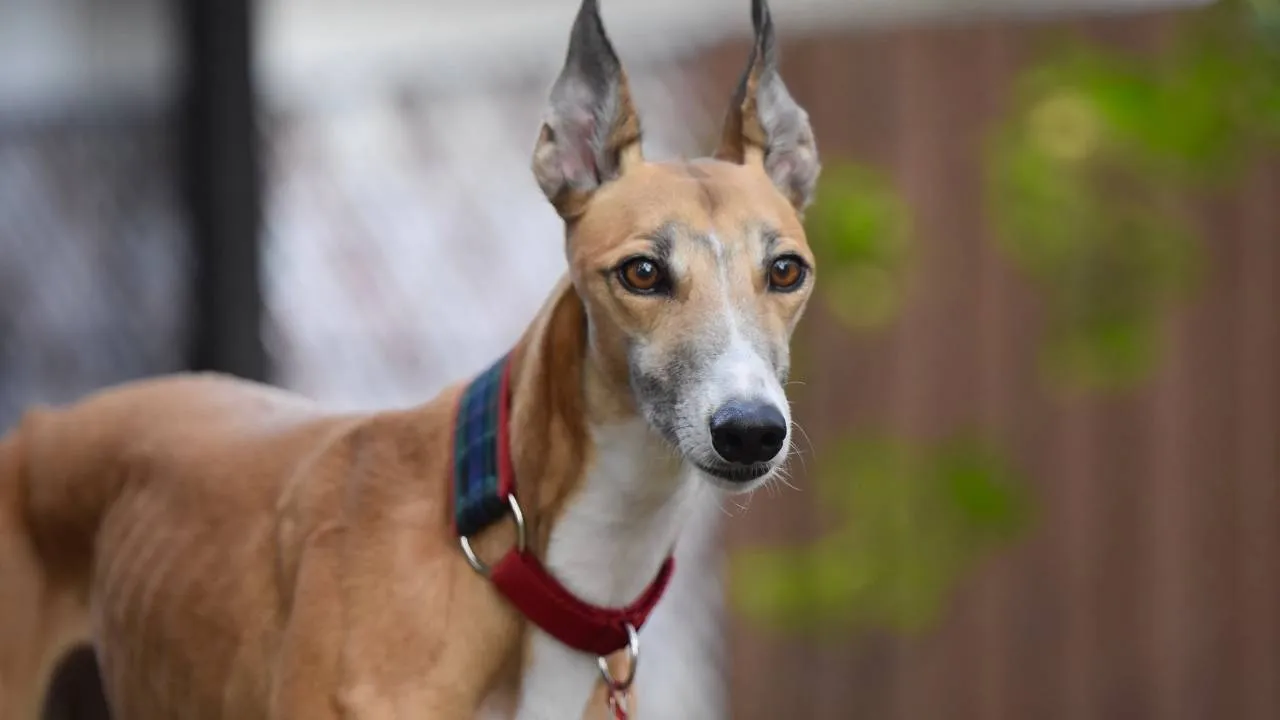
Despite their racing background, Greyhounds are known for being calm and quiet indoors. They rarely bark, making them excellent neighbors in apartment buildings. Their composed temperament means they can spend long periods lounging peacefully without restlessness.
Compact Frame and Minimal Grooming
Standing tall yet surprisingly lightweight, their lean frame fits well into small spaces. Their short, smooth coat sheds very little and requires only occasional brushing. Greyhounds also have no strong odor, which is a big plus for indoor settings.
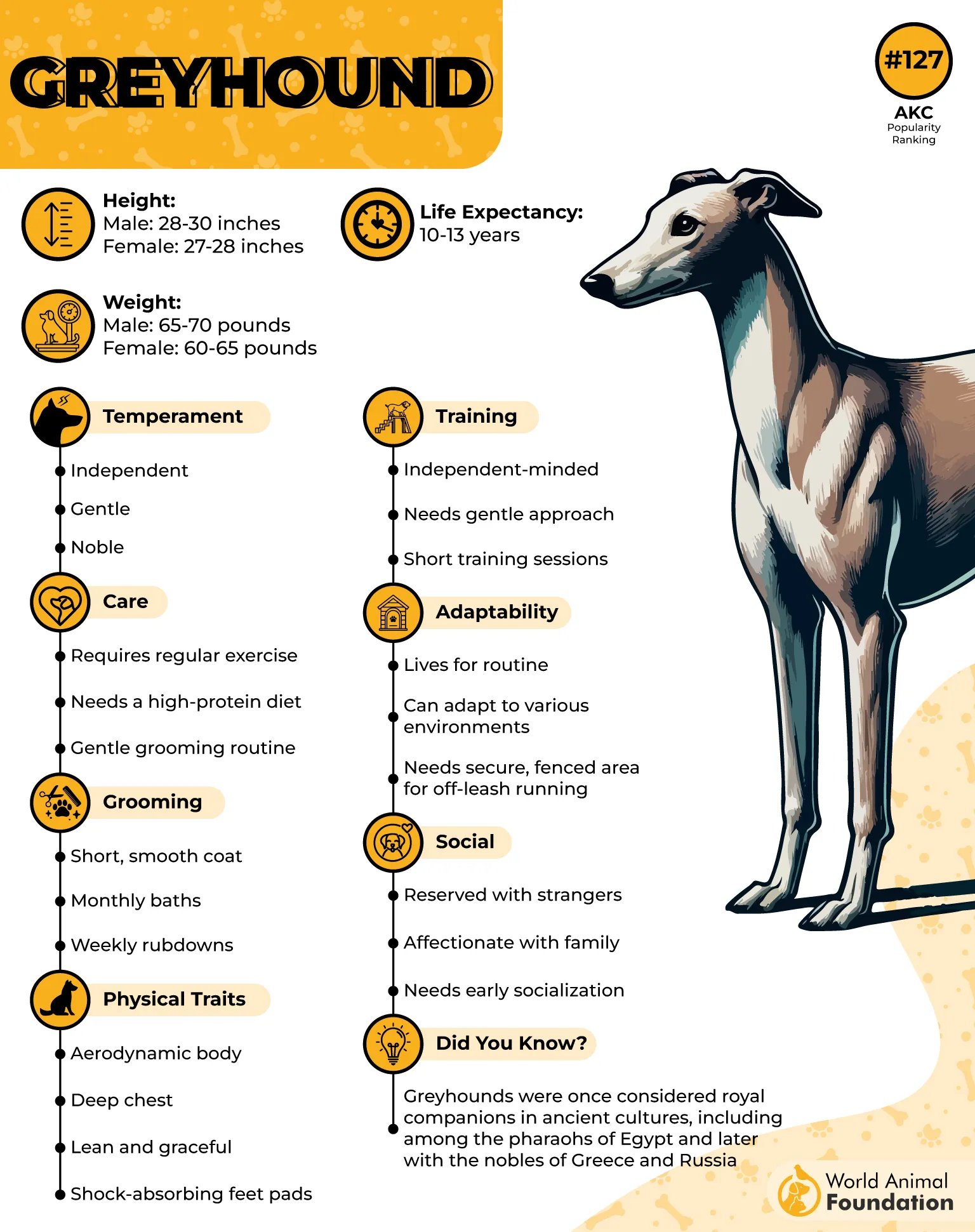
Low Exercise Needs and Balanced Energy
They’re famously known as “45-mph couch potatoes” due to their short bursts of speed and long lounging hours. A couple of daily walks or a brief sprint at the park is usually enough. This makes them one of the few large breeds where dogs thrive in low-activity homes.
Unique Physiology and Long Lifespan
With a low body fat percentage and unique muscle structure, they require soft bedding for comfort indoors. Their life expectancy often reaches 12–14 years with minimal genetic issues. Greyhounds also benefit from light mental and physical stimulation to stay content in compact homes.
7. Poodle
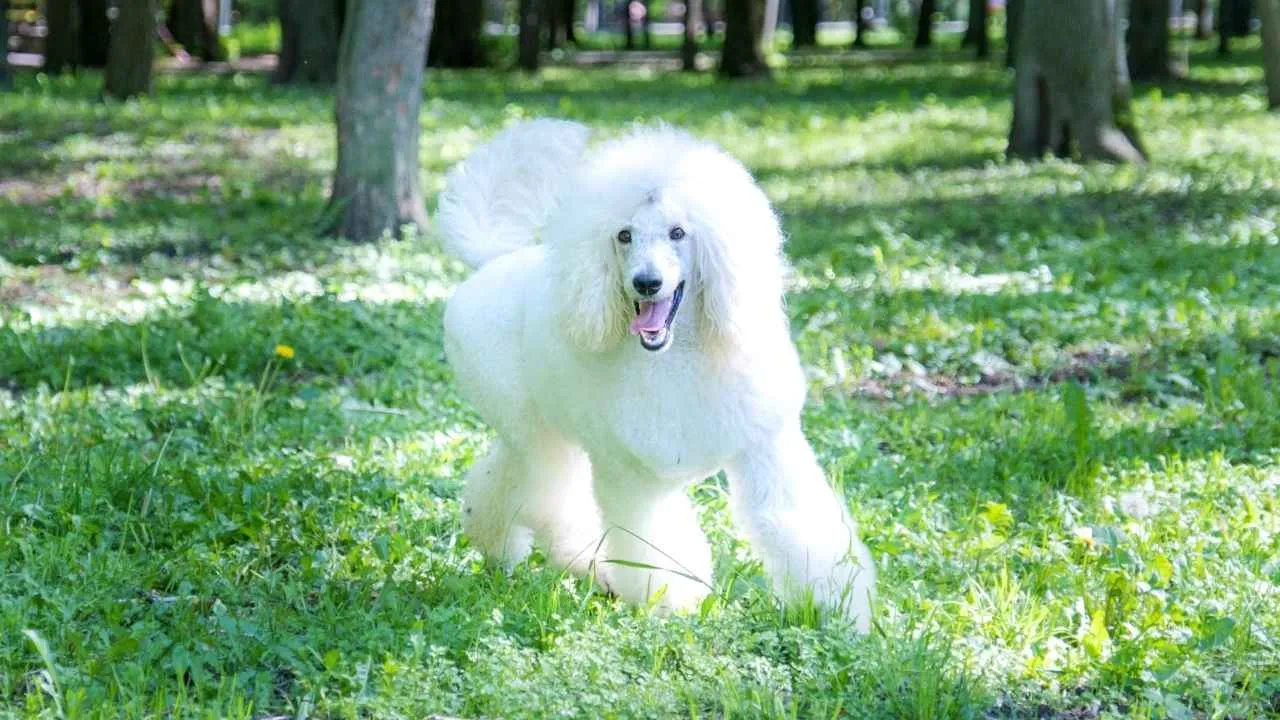
Available in Toy, Miniature, and Standard sizes, Poodles offer flexible options for small-space living. Toy and Miniature Poodles especially fit well into compact homes due to their modest exercise needs. Their refined build and predictable temperament make them easy companions in shared housing.
Clean, Hypoallergenic, and Low-Shedding
Their tight, curly coat doesn’t shed much, which makes indoor upkeep more manageable. While they do require grooming, the coat’s hypoallergenic nature helps allergy-sensitive owners. This trait also keeps dander and dust to a minimum, an asset in closed spaces.
Responsive Temperament and Apartment Manners
Poodles are highly trainable and quick to understand routines, perfect for urban lifestyles. They rarely bark without reason and can be taught to manage elevator rides, busy lobbies, or neighboring noise. Their calm but alert nature also places them among dependable alert dogs.
Documented as One of the Most Intelligent Breeds
The Poodle ranks second in canine intelligence, right behind the Border Collie — a fact widely supported in breed literature, as per All Poodle Info. Their ability to live peacefully with other pets and their minimal genetic health concerns further make them an excellent apartment choice.
8. Havanese
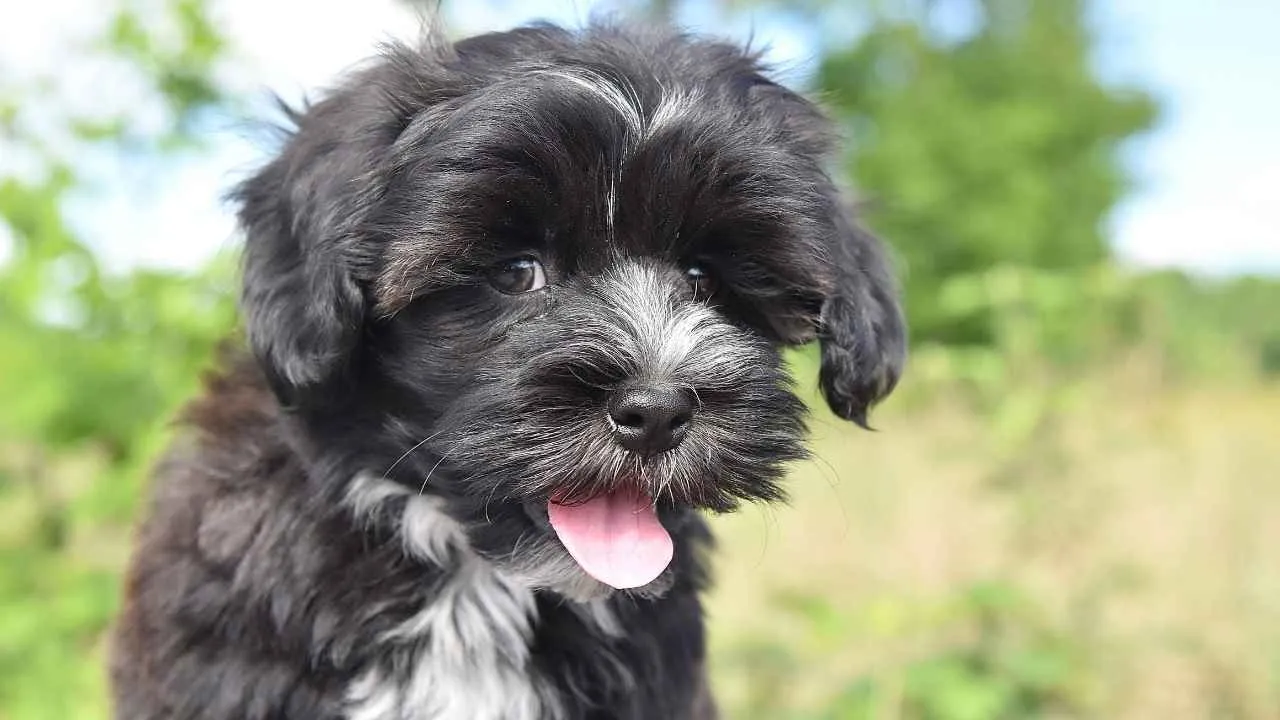
The Havanese typically weighs under 13 pounds and adjusts well to smaller living spaces. Their compact size makes them easy to manage in apartments or urban homes. They’re quiet by nature, which reduces noise complaints in close quarters.
Sociable and Naturally Affectionate
They form strong bonds with people and stay close to their humans without being overly dependent. Their ability to comfortably coexist with small animals also makes them suitable for multi-pet households. This easygoing temperament fits city lifestyles.
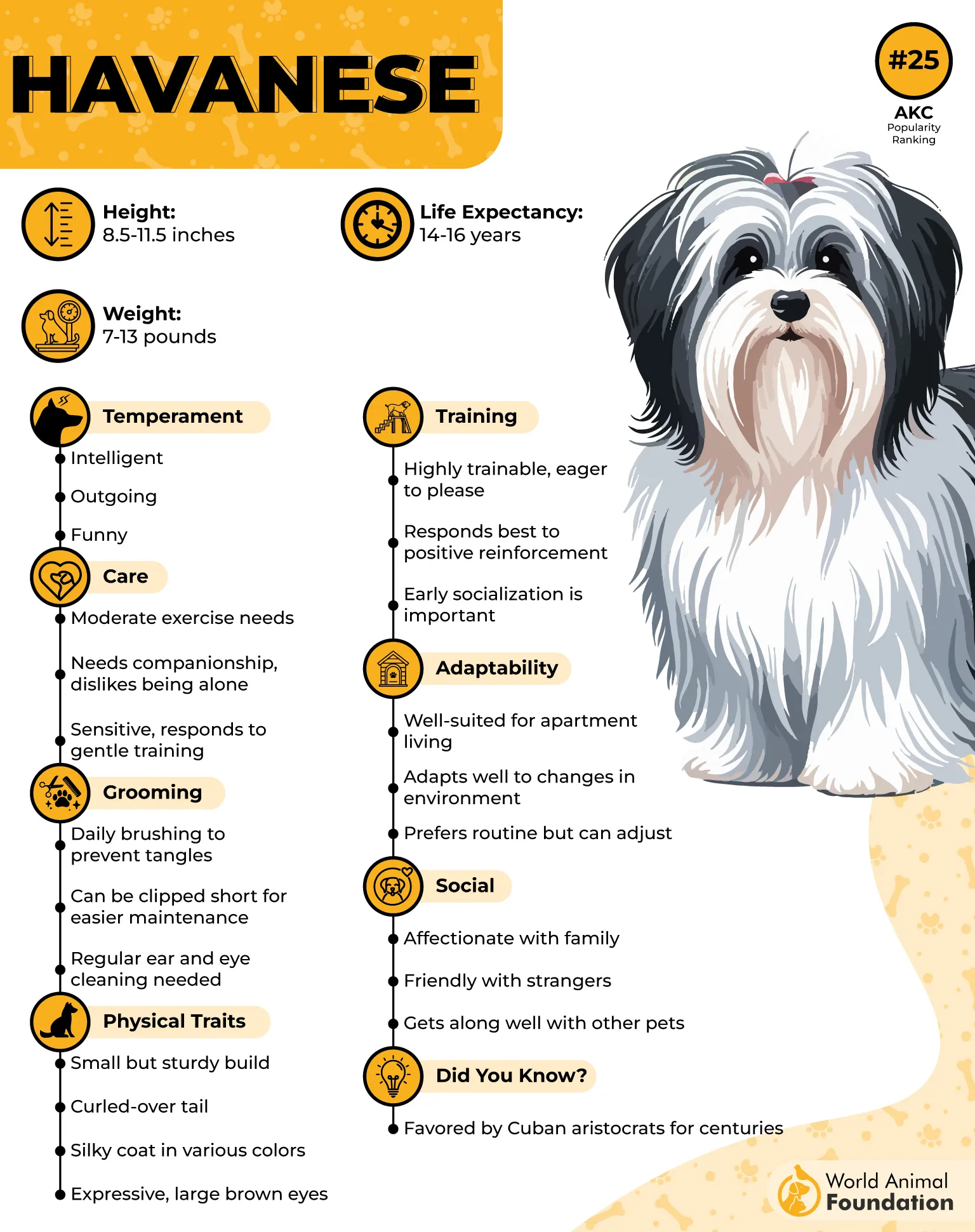
Low-Shedding Coat and Indoor-Friendly Grooming
Despite having a silky, double-layered coat, the Havanese doesn’t shed much, which is helpful in confined spaces. Weekly brushing is usually enough to maintain its condition indoors. Groomers often trim them into “puppy cuts” for easy upkeep.
Curious Minds with Moderate Activity Needs
They remain playful well into adulthood but can release their energy level through short play sessions indoors. Puzzle toys and hallway fetch can keep them engaged daily. This balance of activity and rest makes them an excellent apartment companion.
9. Siberian Husky

Though bred for endurance, Siberian Huskies have a medium-sized, athletic frame that doesn’t feel bulky in apartments. Their clean habits and low natural odor make them surprisingly manageable indoors. Most don’t drool or shed excessively when regularly groomed.
Quiet Nature and Controlled Vocalization
Huskies are generally quiet and rarely bark, making them apartment-appropriate in terms of noise levels. They may “talk” with howls or murmurs, but this vocal trait is usually triggered by interaction rather than random barking. Neighbors are rarely disturbed when they’re well-trained.
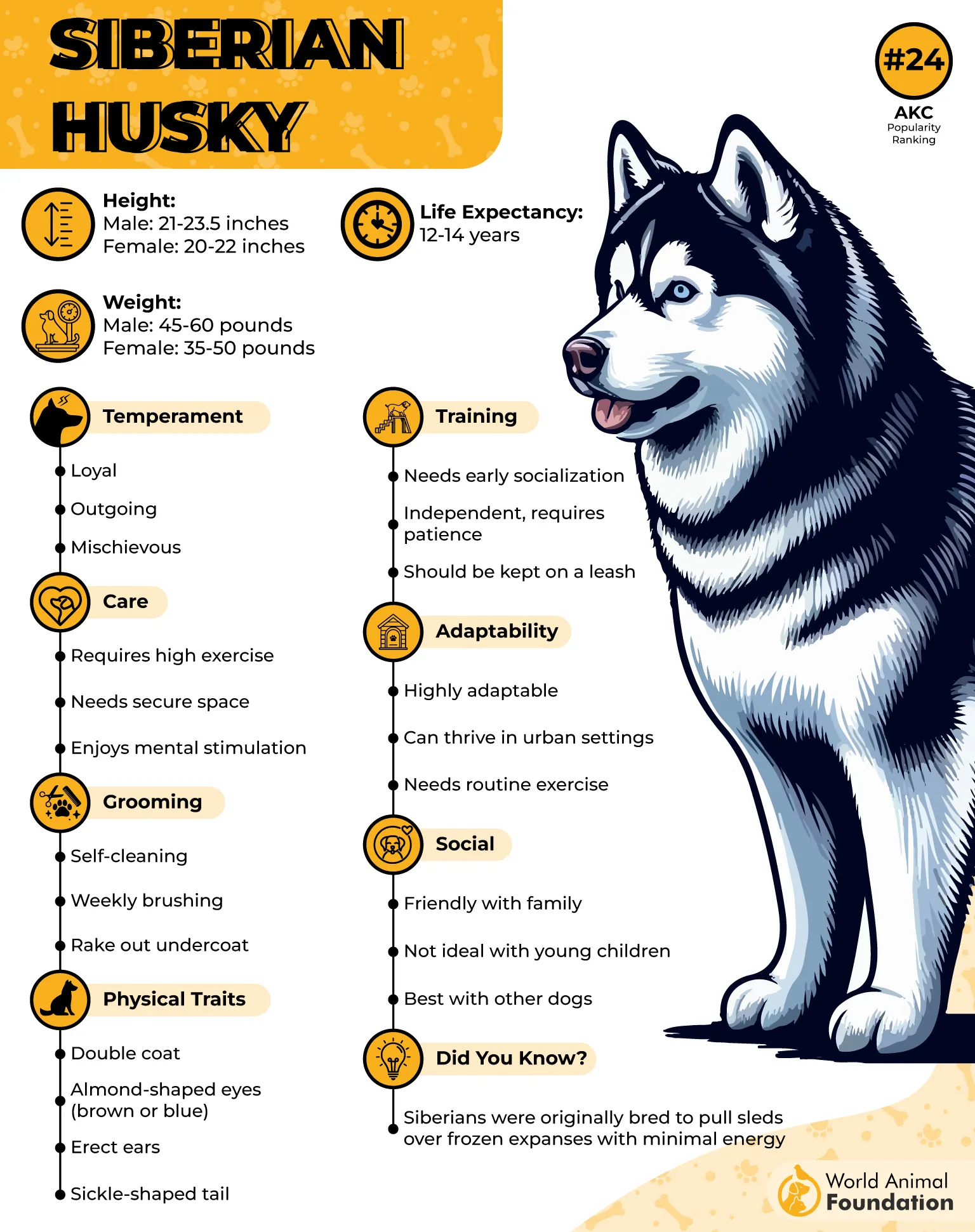
Routine-Oriented and Socially Stable
Siberian Huskies are creatures of habit — they adjust well to set schedules for walks and feeding. They can cohabitate with other dogs peacefully when raised in a social environment. Their even-tempered nature avoids random aggression or clinginess in shared living spaces.
Fun Fact Rooted in History
Siberian Huskies once ran 658 miles in just five and a half days during the 1925 serum run to Nome — an unmatched display of endurance. Today, that lineage lives on in their adaptability, especially with active families who can meet their energy needs with consistent walks and a balanced diet.
Conclusion
Choosing a dog is more than finding a good fit for your lifestyle — it’s about choosing a future with fewer surprises. While no breed is completely free from health issues, some stand out for staying strong across generations.
The breeds we covered above are generally healthy dogs, with steady temperaments and lower risks of serious conditions. Whether you’re drawn to healthy weight breeds like the Greyhound or exploring the healthiest small dog breeds like the Chihuahua and Havanese, each offers peace of mind.
If you’re looking for a dog that’s healthy, resilient, and low-maintenance, starting with these purebred dogs is a smart step toward a lasting, joyful bond.


